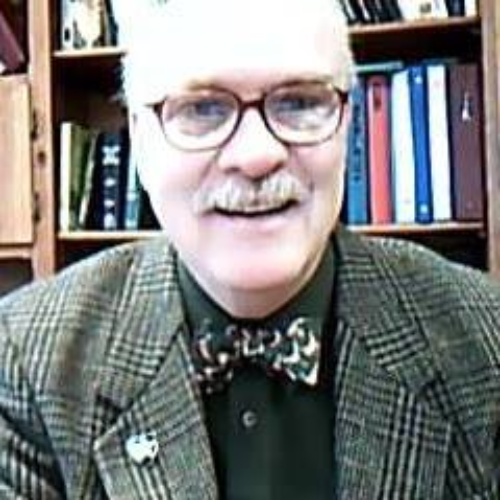-
"Bradford, The Mayflower And Plymouth" Series
Contributed by Robert Leroe on Nov 28, 2017 (message contributor)
Summary: The heritage of the Pilgrims
Bradford, the Mayflower and Plymouth
Pastor Bob Leroe, Cliftondale Congregational Church, Saugus, Massachusetts
Congregationalism (and others from the Reformed tradition) has its roots in the Pilgrims who came from England, led by William Brewster and William Bradford. The issue at stake was religious freedom. The Pilgrims were non-conformists, separatists in a hostile environment. English law mandated that those who missed Anglican worship or attended “unlawful” services would be severely punished. The “established” Church of England was the only church allowed. The Crown feared divisive factions would disrupt the order of the Empire; the Pilgrims were considered a threat. In our modern age of pluralism, we find it hard to imagine not having freedom to worship. The convictions of the Pilgrims influenced America’s founders.
The Pilgrims were mostly modest farmers who argued that everyone, not just the clergy, had the right to read and interpret the Bible. The son of one farmer, William Bradford, began attending worship at Scrooby Manor, the home of William Brewster, who became a mentor and friend. Brewster was a university graduate and was expected to have a promising career in politics. He grew to see the need for purification in both church and state. James I was on the throne, who swore he would not tolerate any challenge to his authority. It became dangerous to even suggest any reforms. Separatists were arrested and imprisoned.
As the situation worsened, the only option was to flee the country. The Netherlands was considered a safe haven. Many who attempted to escape were arrested and lost all their possessions. Gradually small groups made it to Amsterdam. As their plight was publicized in the newspapers, others were inspired by their cause; the movement began to spread. In Holland the growing Pilgrim community banded together, found employment, and began to pray for God’s guidance. They lived primarily in the city of Leyden, an industrial center, and a major life adjustment to people accustomed to agriculture. They joined trade guilds, some even joined the military…and there was fear that they would be assimilated—they were exiles, but did not want to lose their English heritage.
William Brewster published the Pilgrims’ “dangerous” ideas, and King James demanded that the Dutch ambassador have him arrested. He went into hiding as a fugitive as the persecution reached Leyden. Politically, a ten-year truce between Holland and Spain was about to expire. Should Catholic Spain conquer Holland an even greater persecution would follow (perhaps another Inquisition). The only option was to flee Europe altogether. In the “New World” the Pilgrims had a real chance of enjoying religious freedom. After eleven years in Holland they devised plans to sail to America.
There was to be two ships to sail in, the Mayflower, and the Speedwell, but the latter proved to be not seaworthy. Many had to wait in Holland for another opportunity. Other delays occurred, and finally on August 5th the Mayflower set sail. Not all the passengers were Pilgrims (they referred to the other settlers as the “Strangers”). One of the non-Pilgrims became close friends with Bradford, a Dutch soldier by the name of Miles Standish. He later became central to the security of the settlers.
The Mayflower stopped briefly in Plymouth, England, before beginning it’s ocean crossing. The Pilgrims’ last sight of England would be Plymouth, and by God’s Providence, they would settle in an area that had been named Plymouth by English explorers.
The Mayflower was primarily a freight vessel, and was not fitted for passengers. The voyage was extremely cramped and uncomfortable, and high winds meant that most became seasick. There were no beds, so the passengers had to sleep in hammocks or pallets on the deck. The Pilgrims began to look to William Bradford to negotiate with the crew and the other passengers. Surprisingly there was only one death during the passage, a crewman who enjoyed tormenting and cursing the passengers came down with a sickness and died. There was also one birth, a son to Stephen and Elizabeth Hopkins.
After 66 days at sea, wondering if they would ever arrive, they came in sight of Cape Cod. Then began the search for a safe place to land. Like the Hebrews who journeyed to the Promised Land, the Pilgrims arrived at a new country, trusting God to help them establish a new way of life.
Because the settlers were a “mixed” group, Bradford drew up an agreement among them, a document known as the Mayflower Compact, which stated that all had equal rights and responsibility for the success of this new colony. The Compact outlined a democratic form of government (far different than the European model of monarchies). John Carver was elected the first Governor.
The location of Plymouth was ideal—an enclosed harbor, ground well-suited for farming, but because they arrived in the late Fall, the land was inhospitable, and there was the ever-present threat of attack by Native Americans. They discovered a supply of seed corn left by a local tribe, and yes, they looted the supplies, but they resolved that they would repay the Natives, and they did when, six months later, they made first contact with the Wampanoag tribe. Had the Pilgrims settled anywhere to the north or south of Plymouth they would have encountered hostile tribes.

 Sermon Central
Sermon Central



